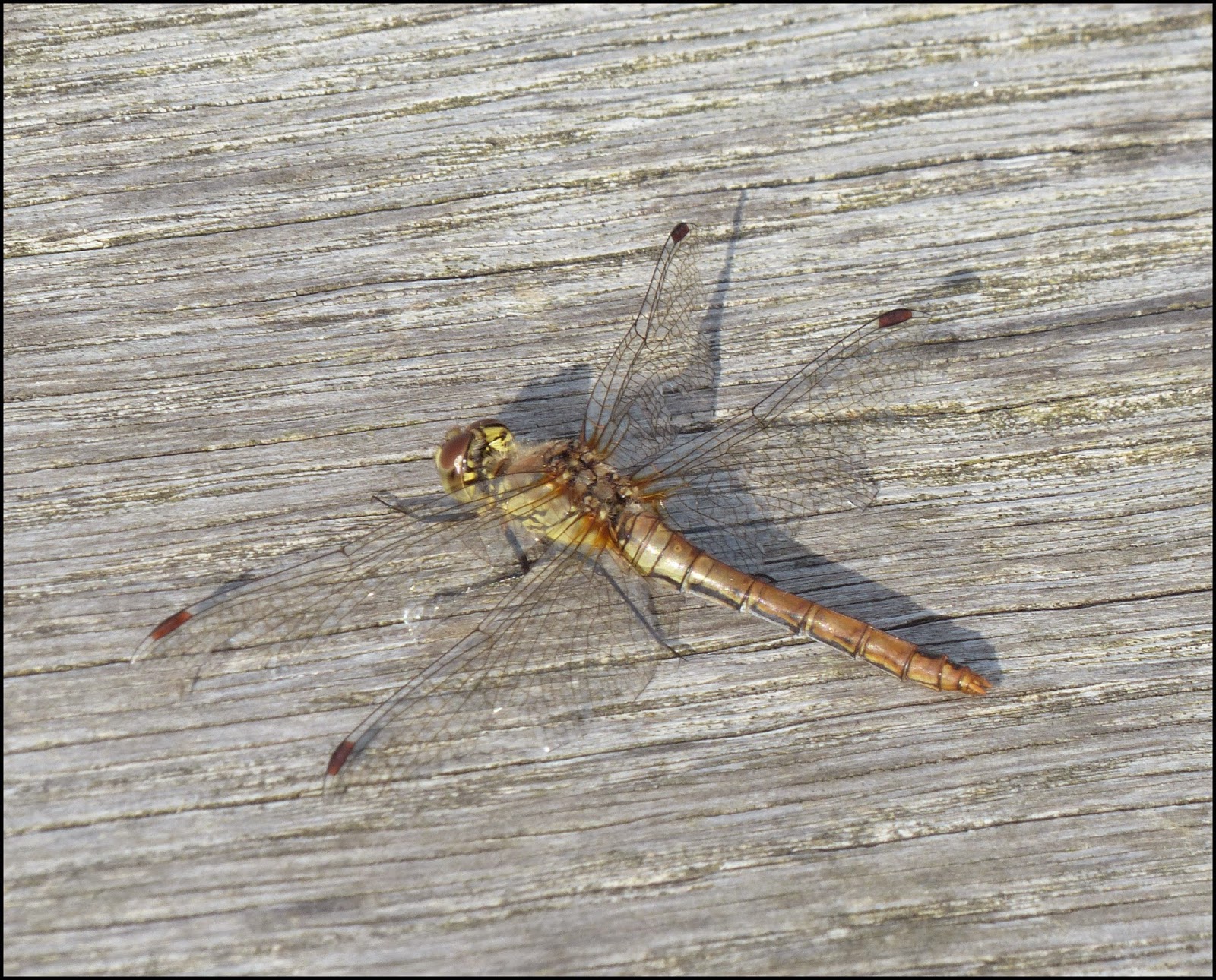I only noticed these head markings (below) for the first time when I uploaded my photographs.
It looks as though the lizard below had lost the end part of its tail ...
This next lizard (below) had a long tail, but there was a particularly scaly patch or fracture plane towards the end where perhaps the tail had re-grown. I don't know whether this applies to all species of lizard, but when a lizard sheds part of its tail in a bid to escape a predator, the lost section moves about for a while, distracting the hunter, thereby giving the lizard time to escape. The ability to a shed (and re-grow) the tail is called 'autonomy'. Re-grown sections of tail have cartilage rather than bone and cannot be shed in the same way. The mere threat of predation can cause sufficient alarm in the creature to trigger tail loss.
The lizard in the photo below clung to the edge of the boardwalk ... Once again, the photo was taken with my zoom lens.
Ticks on lizards are rarely seen with the naked eye, but they often show up in photographs. Unlike the lizards I have occasionally spotted on Dunwich Heath, where there are animals grazing nearby and swathes of heather and bracken, the Wicken Fen lizards in my photographs do not appear to have ticks.
I have added these to the UK Ladybird Survey.
Unfortunately we also noticed this Harlequin ... The thumb is to give a rough sense of scale.
We thoroughly enjoyed the chance to learn about some of the butterflies on the reserve, thanks to the knowledge and enthusiasm of Alison, a NT volunteer who leads butterfly walks.
We failed to see any Skippers this time, but we noticed a few Small Tortoiseshells ...
I was keen to photograph a male and female Common Blue together, but had difficulty knowing where to focus the camera ...
We spotted a couple of Brown Argus ...
... and Speckled Woods.
We are now moving on to the insects that I find hard to identify with accuracy! Please leave a comment if you spot a mistake or can help with identification. There were good numbers of Hoverfly ...
I think the one above may be the Striped hoverfly (Syrphidae).
 |
| To be identified ... slightly different from the one above, perhaps a Sunfly? |
The breezy conditions probably accounted for the fact that there were few dragonfly on the wing. However, we found a few in the more sheltered spots. Here is a (?young) Common Darter ...
... and another.
I think this may be a male Ruddy Darter ... There seems to be a red tinge to the pterostigma.
There were several spiders - my photos are as yet unidentified. Do let me know if you recognise these arachnids!
The creature below seems to be a Short-winged Conehead (Conocephalus dorsalis), which is a species of Bush Cricket.
The photo below shows the length of the antennae!
I am guessing that this is Roesel's Bush Cricket from the yellow markings ...
There were plenty of House Sparrows around the visitors' centre, but we saw surprisingly few birds on this occasion. We even failed to see a Marsh Harrier. However, the abundant insect life made up for any shortcomings on the avian front.
You may feel miles from nowhere (and indeed the nearest hostelry is called the Five Miles From Anywhere No Hurry Inn), but you know for sure that you are on a nature reserve when you come across a reed with its own number!
There was one last surprise in store when we got back to the car ... I particularly love the pattern made by the creature's shadow!
 |
| Is this a Speckled Bush Cricket? I'm not sure ... |












 ...
...

















3 comments:
Hello Caroline, what a lovely post. I love all the photos. The Lizards, Ladybug and the butterflies are all some of my favorites.. Well done, have a happy day!
Wow.. what a great set of photos, you have seen allot of great things, The blue Butterflies look amazing.
Amanda xx
Lovely photos, specially the common blue butterflies and the first ladybird photo is stunning.
Sorry i can't help with any of the id questions.
Post a Comment